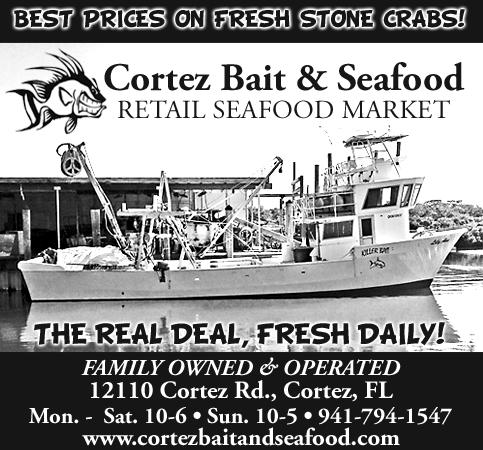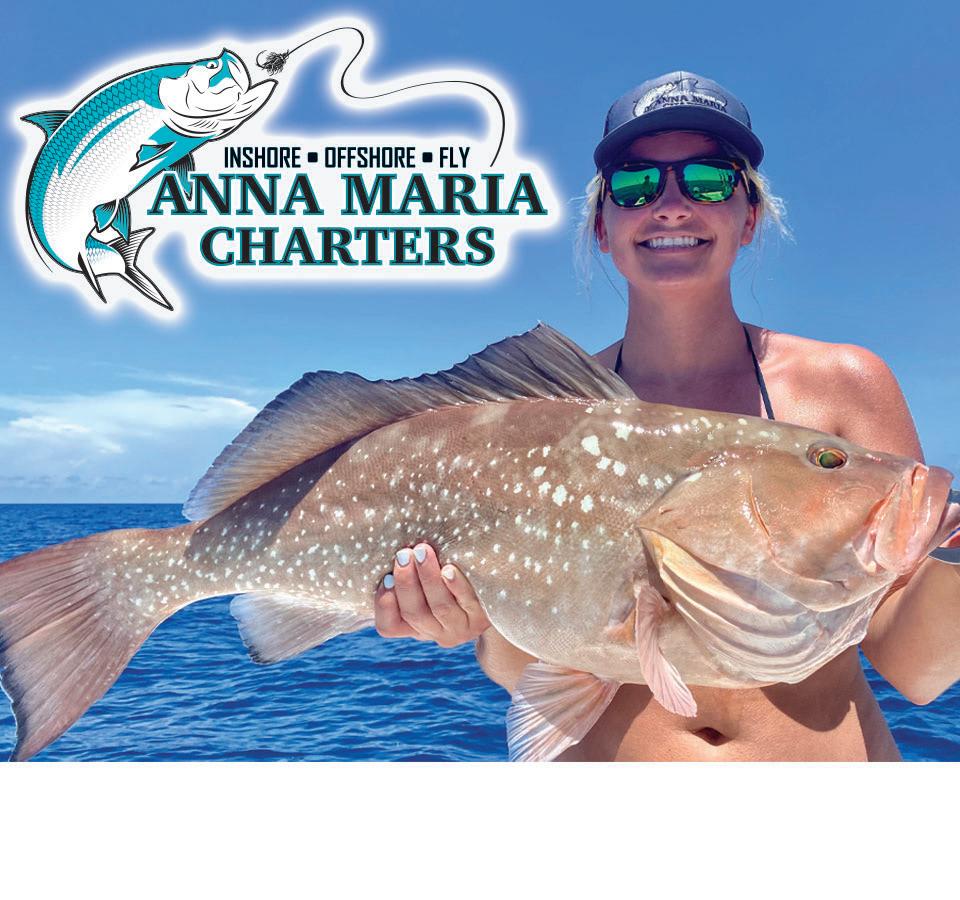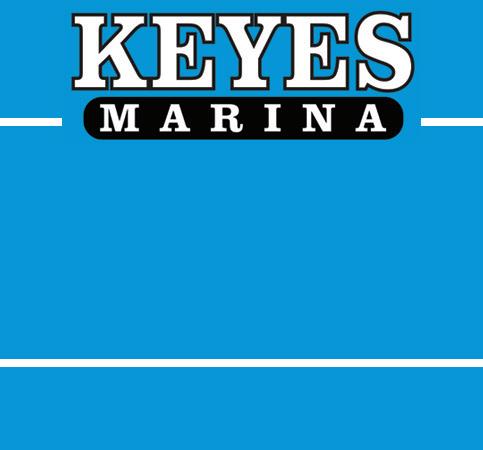
9 minute read
OUTDOORS
20 THE SUN OUTDOORS JANUARY 5, 2022
A New Year’s resolution
Reel Time
RUSTY CHINNIS
I’m guessing that when it comes to making and keeping New Year’s resolutions, your average isn’t much better than mine. When I look back, I don’t sweat most of them. Resolutions like losing weight or exercising more aren’t so critical. Then there are other resolutions that one just can’t take for granted or put on hold anymore. The resolution to work to protect the habitat and water quality of the Suncoast rises to that level.
If you think that’s an overstatement, I encourage you to speak to any one of the professional fishing guides, like Captain Justin Moore, a secondgeneration guide on Anna Maria Island who spends more than 200 days on the water every year. As a keen observer by trade and nature, Moore is alarmed with what he’s seeing. It was Moore and his dad, Captain Scott Moore, who first alerted me to the fact that vast stretches of Sarasota Bay had lost seagrasses after the devastating red tide of 2018.
How did they know almost a year before the official notice was released by the Sarasota Bay Estuary Program? They saw it with their own eyes. Thousands of acres of lush grasses that they had fished for decades were suddenly just bare sand.
I heard the same concerns from veteran anglers like Captain Todd Romine, who has been fishing Sarasota Bay for more than three decades. Romine was so concerned he sacrificed a day of fishing to take Sarasota Bay Estuary Program Executive Director Dave Tomasko to show him. Tomasko made an initial determination that grass beds that had been in water 5 feet or deeper were essentially gone.
This was six months before the results from the Southwest Florida Water Management District seagrass survey documented an 18% decline in seagrass across Sarasota Bay, Roberts Bay and Little Sarasota Bay from 2018 to 2020. The decline equates to a loss of 2,300 acres of seagrass. The total acreage of seagrass coverage in the area is down from 12,853 in 2018 to 10,540 in 2020. By comparison, seagrasses in the 1950s covered about 10,246 acres, a low after dredge and fill operations and sewage systems devastated a once-vibrant ecosystem. The coverage steadily built from there as municipalities converted to central sewer systems and stormwater runoff began to be managed. Now the loss we’ve experienced in two years means the area basically has to start over.
Tampa Bay, linked directly to Anna Maria Sound, didn’t fare much better, losing 13% of its seagrass, more than 5,400 acres. When you consider that 2.5 acres of seagrass supports up to 100,000 fish and 100 million invertebrates like clams, crabs, starfish and snails, the impact of the loss becomes more evident.
If that wasn’t enough to alarm observers of the bay, the debacle at Piney Point - which released more than 200 million gallons of phosphate process wastewater into Tampa Bay in the spring of 2021 - should have been. That release likely led to the most devastating red tide event in upper Tampa Bay in more than 30 years, killing more than 1,711 tons of sea life.
On top of these devastating events, two years of massive and unprecedented lyngbya (cyanobacteria) blooms in Anna Maria Sound and Tampa Bay in 2020 and 2021 blanketed thousands of acres of seagrass with a foul-smelling mass that blocked life-giving light.
While local waters have become clear as they cool during the winter, keen observers will notice that the bay is still choked with a variety of algae. Why is that a problem? For an answer, we only have to look to the east coast of Florida

Lyngbya blocks a kayaker from entering Robinson Preserve in 2021.
RUSTY CHINNIS | SUN
SEE REEL TIME, PAGE 21












Plan January fishing on tides, weather
CAPTAIN RICK GRASSETT
You may find reds and big trout concentrated in potholes in January. Action with trout, blues, Spanish mackerel, pompano and more on deep grass flats can be good depending on conditions. There should also be good catchand-release snook action in rivers, creeks and canals this month, although fishing docks for snook and other species is also a good option. It may be worth checking the coastal Gulf for tripletail, cobia, false albacore (little tunny) and more when it’s warm.
Snook and reds remain closed to harvest south of State Rd 64 in Manatee County on the west coast of Florida, south to the south bank of Gordon Pass in Collier County. Reds and snook are catch-andrelease only in that zone until May 31. Spotted seatrout has reopened in that zone with a three-fish per person bag limit and a six-fish boat limit. Trout must be from 15”-19” with one allowed per vessel over 19”. Full regulations and details can be viewed at https:// myfwc.com/ .
Snook are very temperature sensitive, so I won’t target them if the water temperature dips below 60 degrees. However, fishing lighted docks in the ICW at night with lures and flies can be very good in January. Small white flies, like my Grassett Snook Minnow, Gurglers and shrimp fly patterns will work well for fly anglers. Spin anglers should score with CAL jigs with shad tails or 4” jerk worms, DOA Tiny TerrorEyz and DOA 2-3/4” and 3” Shrimp. Fish the peak tidal flows for the best action.
You should also find snook in rivers, creeks and canals this month. Fish deeper water in outside bends to locate snook where you may catch them with CAL jigs and shad tails or jerk worms, DOA Baitbusters or diving/suspending plugs. You may also find reds, juvenile tarpon and even largemouth bass in the same areas depending on salinity.
Reds should be a good option this month. You’ll find them concentrated in potholes when the tide is low. Fly anglers should score with lightly weighted flies fished on a 10’-12’ leader with a floating fly line. Reds feed on crustaceans this time of the year, so crab and shrimp fly patterns should work well. They may tail on shallow grass flats when the tide is low. You’ll need weedlessrigged plastic baits or flies with weed guards to target tailing reds. A CAL shad tail on a weedless hook or a DOA shrimp rigged weedless and fished backward are a couple of my favorite lures for tailing reds.
You may also find reds around docks, along with snook, sheepshead, flounder and more. Little Sarasota Bay has numerous oyster bars and docks that often hold reds in January. Work CAL jigs slowly along the bottom for the best action. You’re likely to find big trout in many of the same areas that you find reds. The same lures, flies and techniques that are used for reds will also work for big trout.
You’ll also find trout on deep grass flats in January along with blues, Spanish mackerel, pompano, flounder and more. I like to drift and cast ahead of my drift with CAL jigs and a variety of plastic tails and DOA Deadly Combos. Since trout can sometimes hold very tight to a particular spot or area, try to cover as much water as possible to find them. Once you’ve located fish you can shorten your drift or anchor on them. A GPS can be useful for this type of fishing since the breadcrumb trail will allow you to duplicate your drift. A drift anchor will slow your drift so you can fish it more thoroughly or make it easier for fly anglers to move their fly. My favorite deep grass flats have a good mix of grass and sand with a strong tidal flow.
Even though there may not be much happening in the coastal Gulf this month in the way of sight fishing it may be worth a look when it is warm. Migratory species such as king and Spanish mackerel, cobia and tripletail probably have moved further south, however, they could reappear during warm-ups. Also, look for false albacore (little tunny) when it’s warm since they may move from offshore to inshore depending on where baitfish are located.
January can be one of the toughest months of the year to fish. However, if you can choose when to fish based on tides and weather, it can be good. Action is usually good as weather fronts approach. Following fronts, fishing may be tough for a couple of days so afternoons may fish better at that time. I’ll let the stage of the tide determine where to look for fish. When the tide is low, look for reds tailing on shallow grass or reds, trout and more in potholes or around docks. Look for reds or big trout cruising on shallow grass flats on sunny afternoons when the tide is high. Our natural resources are under constant pressure from red tides fueled by agricultural, industrial and residential runoff, toxic spills and discharges, freezes, increasing fishing pressure and habitat loss and degradation, please limit your kill, don’t kill your limit!

CAPTAIN RICK GRASSETT | SUBMITTED There should be good action and variety on deep grass flats during January. Dylan Lewis, from Colorado, caught and released this pompano on a fly while fishing Sarasota Bay with Capt Rick Grassett.
REEL TIME: A new year's resolution
FROM PAGE 20 and the sad saga of the Indian River Lagoon (IRL). Once one of the most vibrant marine ecosystems on the planet, the IRL in recent years has seen massive die-offs of marine life and most recently an unprecedented loss of Florida manatees.
This is not an issue that should concern only fishermen. This has the potential to devastate an economy dependant on clean water and a vibrant ecosystem. People move to our area and buy homes because of the water and natural environment. It’s time for Realtors, developers, builders, anglers and every segment of our community to pull together to demand accountability, purchase and protect vulnerable habitat and demand improvements in infrastructure that protect this environmental engine of progress. There are solutions if we can affect the political will. Yes, they will be expensive, but if we don’t act, the cost in the future will be overwhelming and may be too late. Resolve to be part of the solution.
“If you work to save the world and the world is lost, no regrets.” - The Dalai Lama.




